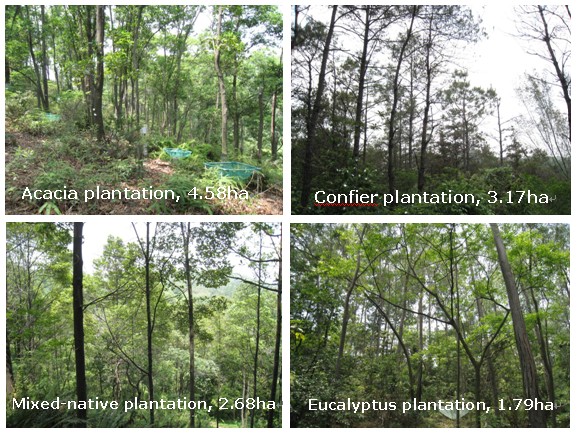

Ecosystems are self-organization systems, with opening and non-linear development characteristics. There is a long history of theory study on self-organization of ecosystems with great advances gotten from function and structure aspects separately, but case study is still lacking. The self-organization efficiency rules need to be discovered, besides the test of many classical hypotheses on function and structure dynamics.
Four different forest restoration modes (Acacia mangium plantation, eucalyptus plantation mixed-native species plantation, and conifer plantation) were evaluated using Energy System Theory and the emergy synthesis method by Dr. LU Hongfang (luhf@scbg.ac.cn) and her colleagues at Vegetation and Landscape Ecology Research Group, SCBG. In addition, the eco-exergies of the four forest restoration modes were calculated, and combined with emergy and empower density to explore the restoration and self-organization efficiencies of these modes. The results showed that the initial conditions could have a permanent effect on the system’s development. The two plantations of exotic species, Acacia mangium and eucalyptus, especially the Acacia mangium plantation, were best for biomass accumulation and soil improvement, whereas the other two plantations composed of native species, especially the mixed-native plantation, were more efficient in capturing the available natural resources. Transformity is an important emergy index for the evaluation of system efficiency, because it takes both input and output into account. In subtropical plantations, trees mainly contribute to eco-exergy, whereas herbs and shrubs mainly contribute to specific eco-exergy. The C-value Paradox does exist in conifer species in this study, and it could affect the eco-exergy evaluation. The joint use of eco-exergy and emergy analysis is useful on evaluation the structure, function and efficiency of ecosystems.
The relative results have been published by the international journal, Ecological Engineering (2011, 37: 277-285).

Sample systems of the four typical artificial forests in subtropical China

